#roman empire
Photo

Areas controlled by Roman and Ottoman Empires
by Yellowapple1000
96 notes
·
View notes
Text
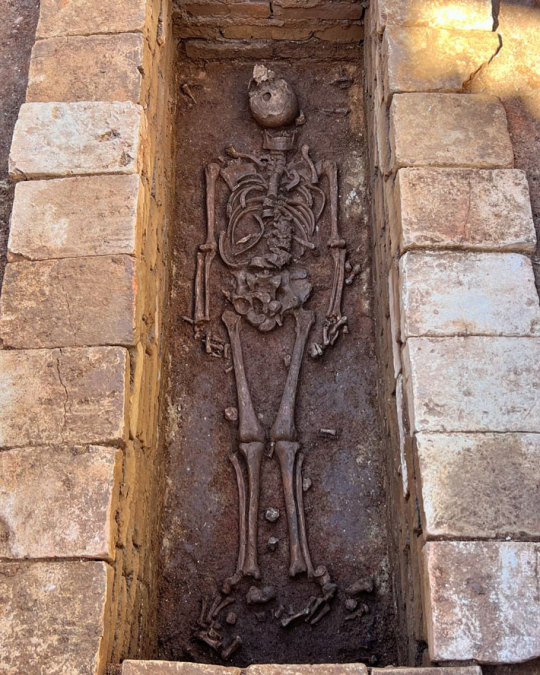
Three Roman Graves Uncovered in Portugal
Three burials dating to the 5th or 6th century AD have been unearthed in the ancient Roman city of Ossónoba in Faro, southern Portugal.
The Ossónoba’s first archaeological evidence dates back to the 4th century B.C., when the Phoenicians settled in the Western Mediterranean. The city was then called Ossónoba From the 2nd century B.C. until the 8th A.D. the city was under Roman and Visigoth dominance being afterwards conquered by the Muslims in 713.
A team of archaeologists from ERA Arqueologia discovered ancient Roman structures and the remains of a man, woman, and child while conducting excavations over a 5,000 square meter area that will eventually house a real estate development.
The excavations, which took place before a construction project, revealed the grave of a man whose skeleton was complete and who would have been between 39 and 45 years old, as well as a young woman under the age of 25, and a baby who would have been no more than six months old, according to archaeologist Francisco Correa.
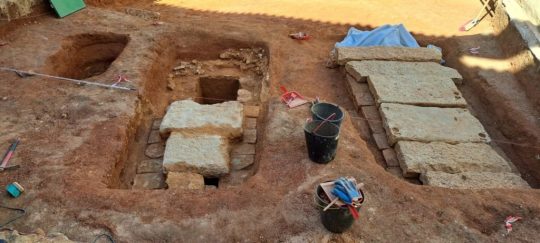
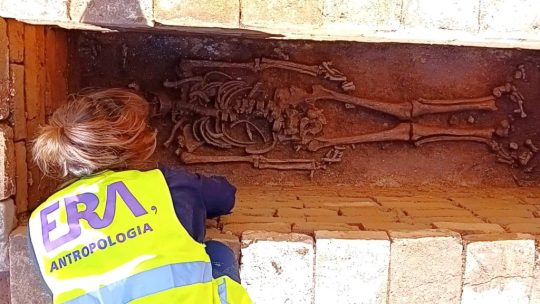

Francisco Correia, the project’s head archaeologist, said in a statement that the discoveries were made in an old truck repair workshop and are believed to date from the 5th or 6th century.
The tombs appear to have been looted in the past to steal “small bracelets, necklaces, and rings,” according to anthropologist Cláudia Maio. The tombs indicate that the people may have had “some economic status” as they were not simply placed in open graves but instead buried in carefully built graves.
The proximity of the three people’s graves seems to indicate that they were family members, though the team cannot be certain of that. “But we cannot say anything for sure,” the anthropologist said.
To learn more, the researchers hope to be able to provide more precise answers through DNA tests and isotopic analysis techniques used to determine population movements and dietary habits from chemical traces in ancient human remains.
This latest archaeological discovery did not come as a surprise to archaeologists, who had already led similar works which resulted in the discovery of a Roman game artifact believed to date back to the first century AD in 2020.

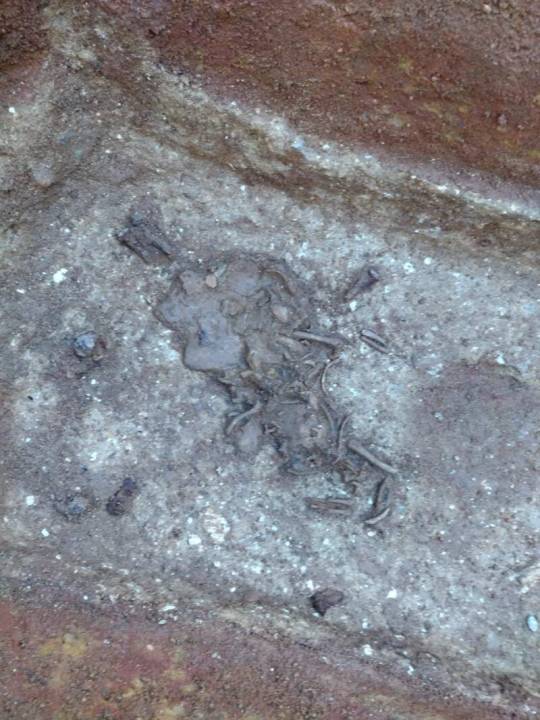

“We know that we are in an area with archaeological potential where there is a 17th-century convent (of Santo António dos Capuchos) to the west, and to the east lies the area where the mosaic of the Ocean God (Deus Oceano), now a national treasure, was found,” he said.
What did come as a surprise to archaeologists was the location of the tombs.
“Based on previous studies, this would have been an area that was possibly residential or more linked to industrial activities. There are many traces of salterns. Largo da Madalena would have been the entrance to the urban area of the city of Ossónoba. The identified graves are in the Figuras area, near Teatro Lethes, close to the Ermida de São Sebastião and the Pavilion of Escola D. Afonso III. This area is almost within the urban fabric,” the archaeologist explained, adding that this illustrates both the “growth and decline of Ossónoba.”
The graves of the man and the woman “were sealed with limestone slabs,” believed to be reused parts from “some of the most emblematic buildings that would have been here in the area,” he believes.
According to the project manager of ERA Arqueologia, who was co-responsible for the work, in addition to the graves, hundreds of small pieces were also discovered which suggest that there may also have been a mosaic there.
The researchers also recovered Roman artifacts in the area, including ceramics, bone dice, nails, pins, a spoon, possible evidence of a dye factory, and coins minted during the reign of Constantine the Great, between A.D. 306 and 337.
Cover Photo: Roman mosaic of the god Oceanus, part of the ancient city of Ossónoba, the modern town of Faro, in Portugal.
By Leman Altuntaş.
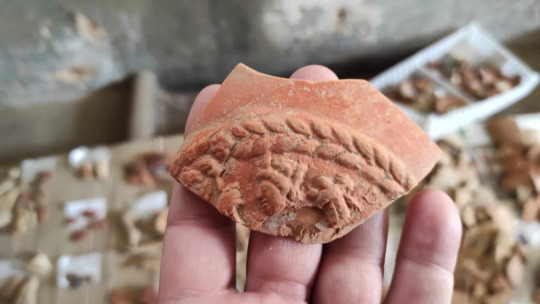

#Three Roman Graves Uncovered in Portugal#Roman city of Ossónoba in Faro#ancient grave#ancient tomb#ancient artifacts#archeology#archeolgst#history#history news#ancient history#ancient culture#ancient civilizations#roman history#roman empire#roman art
82 notes
·
View notes
Text

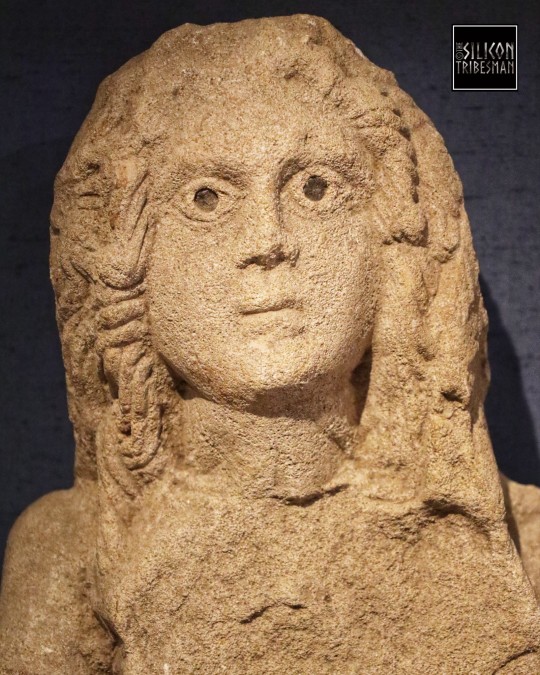
Romano-British Stone Carving of the Goddess Ceres, Corinium Museum, Cirencester
#romanobritish#ceres#goddess#archaeology#roman#romans#roman britain#roman empire#roman culture#ancient cultures#ancient craft#gods and goddesses#statue#artefact#Corinium#Cirencester
64 notes
·
View notes
Text
Antinous, the beautiful young man who gave his life for love to emperor

Antinous was favorite and lover of emperor Hadrian.
"Antinous died in Egypt after falling into the Nile, according to what Hadrian wrote or, according to what really happened, because he was offered as a sacrifice. Hadrian was a great enthusiast of all kinds of divinations and enchantments. Thus, Hadrian honored Antinous - because of his love for him or because he would have agreed to die freely - since the voluntary surrender of a life was necessary for to achieve what he intended." (Cassio Dio)
"The reason for this would have been that Hadrian wanted to prolong his life and that upon asking a magician to take his place, everyone backed off but Antinous offered to do so." (Aurelius Victor)
Emperor Hadrian (reign: 117-138)

Born on January 24, 76, he was the nephew of his predecessor, Trajan. He was married to Vibia Sabina, grandniece of Trajan, with whom he had a terrible relationship but curiously he loved his mother-in-law, Salonia Matidia (Trajan's niece) like a mother.
He is the third of the so-called "Five Good Emperors", however Hadrian was the only one of the five who was not popular either among the people or in the Senate due to his "revolutionary" decisions.
He was the one who stopped - forever - the expansion of the Empire. This was not welcomed at that time because territorial expansion was the soul of Rome since its founding.
He had an almost obsessive admiration for Hellenism, the Romans did not like this either. He was the first to wear a beard, something that the Romans associated with barbarism and "weird people". Years later, his custom would prevail as a fashion in Rome for a lot of years, but for his contemporaries it must have been shocking.
No one before or after him toured the entire empire as Hadrian did, which is why he is known as "The Traveling Emperor." This situation was not well accepted in Rome and even more so when his endless tours were not exactly campaigns to conquer territories.
He used to have sudden attacks of anger becoming aggressive, and hours later he would lament bitterly and try to repair any damage done. This "bipolarity" was seen as a non-Roman attitude.
And finally, the relationship with Antinous. Not because he was a man but because Antinous was not a slave and Hadrian had him in public concubinage, he was always seen next to the emperor and the entire imperial entourage. If he had been a young lady it would also have been considered inappropriate.
But during his long reign of 21 years there were no conspiracies nor rebellions against him; Because despite everything, he was a good emperor.
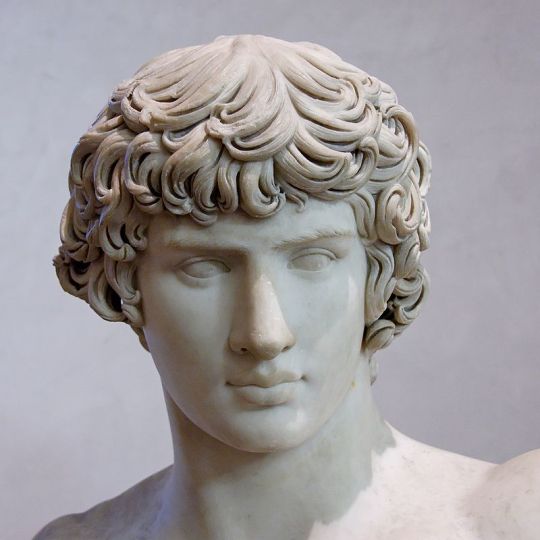

Unfortunately there are no historical sources about the life of Antinous but, thanks to his sculptures, it is known that he was a very handsome young man. As a teenager - but let us remember that the notion of adolescence did not exist in the ancient world - he met Hadrian in Bithynia. From that moment until the day of his death, when he was around 20 years old, he did not separate from Hadrian.
What really happened on the Nile
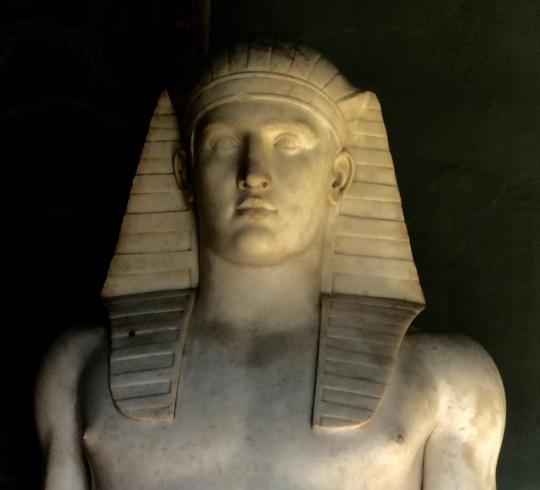
Antinous as Osiris- Vatican Museums.
After listening to a lecture and reading, I discovered that shortly before the death of Antinous, the emperor began to feel ill to the point that he feared an imminent death. But as was his custom, instead of looking for medicine, he looked for "magic spells" in the East.
When he arrived in Egypt with Antinous on October 24, 130, the arrival coincided (and was not so coincidental) with the religious festival that commemorated the death of Osiris, drowned in the Nile and then resurrected by his wife Isis. Goddess Isis was invoked in healing incantations.
Cassius Dion's suspicions are the same as other Roman historians as well as modern ones, because the death of Antinous was "coincidentally" during that religious ritual.
But those same historians agree that it was not Hadrian who asked Antinous to sacrifice himself. As the Roman historian Aurelius Victor wrote, he asked a magician for the sacrifice, but that man and the others backed away, so Antinous voluntarily decided to enter the Nile.

It is very likely that he really believed in those practices, that is, he believed that by doing this, his emperor could heal and live longer. Following the death of Antinous, Hadrian deified him.
46 notes
·
View notes
Text

#the maccabees#israeli#israel#secular-jew#jewish#judaism#jerusalem#diaspora#secular jew#secularjew#islam#Simon maccabeus#judea#Samaria#antisemitism#roman empire#Rome#Roman colonialism#colonialism
26 notes
·
View notes
Text
Fieles hasta la muerte: ¡Christianae ad Leones!, por Herbert Gustave Schmalz

#traditional art#art history#classic art#traditional painting#oil painting#19th century art#art details#art#classical art#art detail#herbert gustave schmalz#arte#pintura#artista#cristian#religious art#roman empire#ancient rome#rome
37 notes
·
View notes
Text


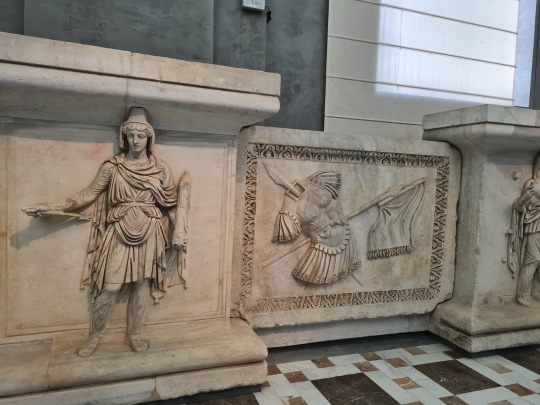
Reliefs from the Hadrianeum in Museo Archeologico Nazionale di Napoli
The persons represent provinces of the Roman Empire under the deified emperor Hadrian. The left figure is Scythia or Noricum, the middle figure is Armenia or Parthia and the right figure is Phrygia or Bithynia.
#naples#napoli#archeology#art#art history#art museum#museum#museum photography#national archeological museum#italy#italia#relief#emperor hadrian#history#ancient art#ancient rome#ancient history#archaeology#antiquity#roman empire#roman emperors#naples italy#campania#travel#travel photography#art photography#culture#photographers on tumblr
21 notes
·
View notes
Text
Archaeologists from the University of Tokyo might have just confirmed a historical gem near Mount Vesuvius – the possible Villa of Augustus, where the legendary first Roman emperor, Augustus Caesar, is believed to have spent his final days.
22 notes
·
View notes
Note
Where were the Palestinian Arabs during the Jewish-Roman wars and which side did they fight for?
They did not exist. There was no Palestinian identity for anyone during that time period. Most Arabs were still in the peninsula and had not reached the Levant in large numbers, and they were divided tribally, without a shared language or religion. The Roman Empire colonized ancient Syria and Egypt when they weren't majority Arab, and had only a limited presence on the peninsula.
25 notes
·
View notes
Text
It's 2024.
And I'm still in the bathroom with Kinn and Porsche during ep 7. One of the most beautiful scenes I've ever seen in my life.
That's my Roman empire

#kinnporsche#kinnporsche the series#roman empire#bl thai#best scene#thai drama#kinnporsche episode 7
20 notes
·
View notes
Text


Crying 👍🥹
#I love them so much it hurts#trixie mattel#katya zamolodchikova#drag race#rupaul’s drag race#best friends#they’re so iconic#screaming crying#roman empire#I want a friendship like theirs
19 notes
·
View notes
Text

I mean, I don't want to sound stupid, but I always assumed that the Ancient Romans were mammals
22K notes
·
View notes
Text


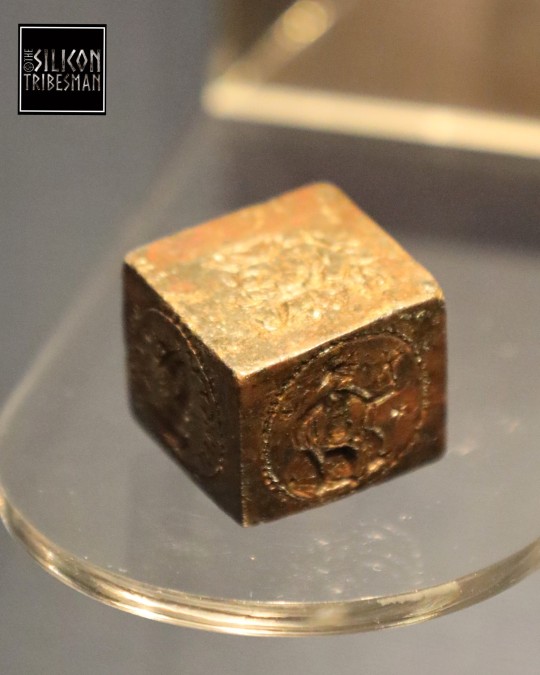

'The Kingscote Cube', 2nd Century CE Roman Engraved Seal Stamp, Corinium Museum, Cirencester
#Kingscote cube#cube#symbols#romans#roman#roman stamp#roman empire#roman living#roman gods#roman britain#archaeology#Corinium Museum#engraving#metalwork
66 notes
·
View notes
Text
”Men think about the Roman Empire” “What’s the female version of the Roman Empire” SHUT UPPPPP. SHUT THE FUCK UPPPPPP. AS A WOMAN I LOVE THE ROMAN EMPIRE. AS A WOMAN I LOVE ANCIENT HISTORY AND BATTLES AND POLITICAL INSTABILITY. THE “GIRL VERSION OF THE ROMAN EMPIRE” IS THE ROMAN EMPIRE. IM GOING TO STAB YOU 23 TIMES
#why do we have to gender history ffs I hate it here#sorry just had to get it out my system#roman empire#history#classics#tagamemnon#ancient history#ancient rome
21K notes
·
View notes
Text
Happy 2,068th to when we should totally just stab Caesar!! Grab a knife with your bestie!



#assassin's creed#ides of march#julius ceaser#julius caesar#aya of alexandria#assassin’s creed origins#ac origins#tumblr holidays#roman history#roman empire#we should totally just stab caesar#rome#ancient rome#caesar#brutus#et tu brute#beware the ides of march#mean girls#shakespeare#Shakespeare Julius Caesar#meme#funny memes#memes#tumblr memes#assassin’s creed
3K notes
·
View notes
